What Are Scaffolding Strategies?
Scaffolding provides temporary support as students master new concepts
Just as construction scaffolding provides temporary support for builders, scaffolding strategies in education offer temporary assistance that helps students reach new heights in their learning. The concept, rooted in Lev Vygotsky’s Zone of Proximal Development theory, involves providing structured support that gradually decreases as students gain mastery.
The zone of proximal development represents the gap between what a student can do independently and what they can achieve with guidance. Effective scaffolding strategies bridge this gap by breaking complex tasks into manageable steps, modeling processes, and providing resources that support learning.
The classic scaffolding approach follows the “I do, we do, you do” sequence:
- I do: The teacher demonstrates and models the concept or skill
- We do: Students practice together with teacher guidance
- You do: Students apply the learning independently
This gradual release of responsibility ensures students have the support they need while building confidence and competence with new concepts.
Scaffolding vs. Differentiation: Key Similarities and Differences
While both scaffolding strategies and differentiation aim to support students in their learning journey, they serve different purposes in the classroom. Understanding these differences helps educators implement both approaches effectively.
Scaffolding
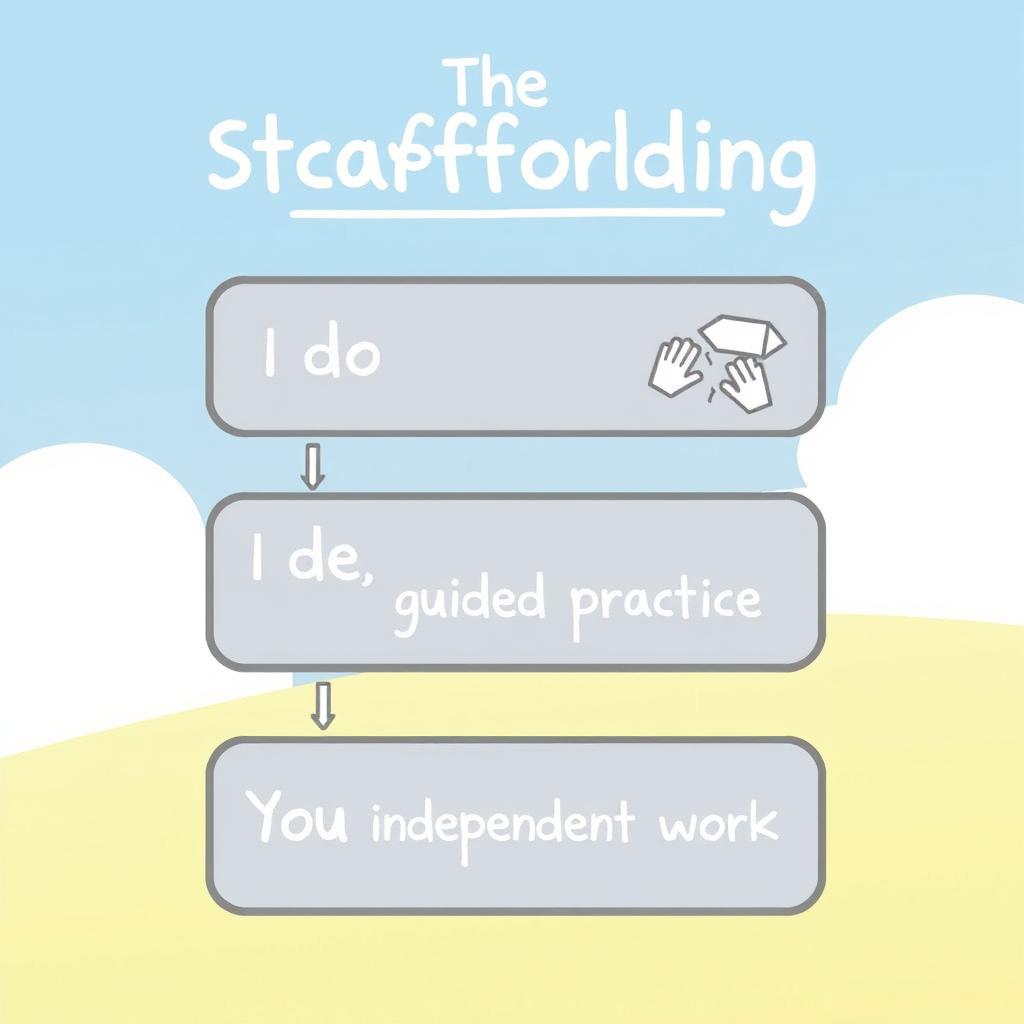
- Temporary support that gradually fades
- Same learning goal for all students
- Focuses on building toward independence
- Addresses gaps in understanding
- Sequential and structured approach
Differentiation
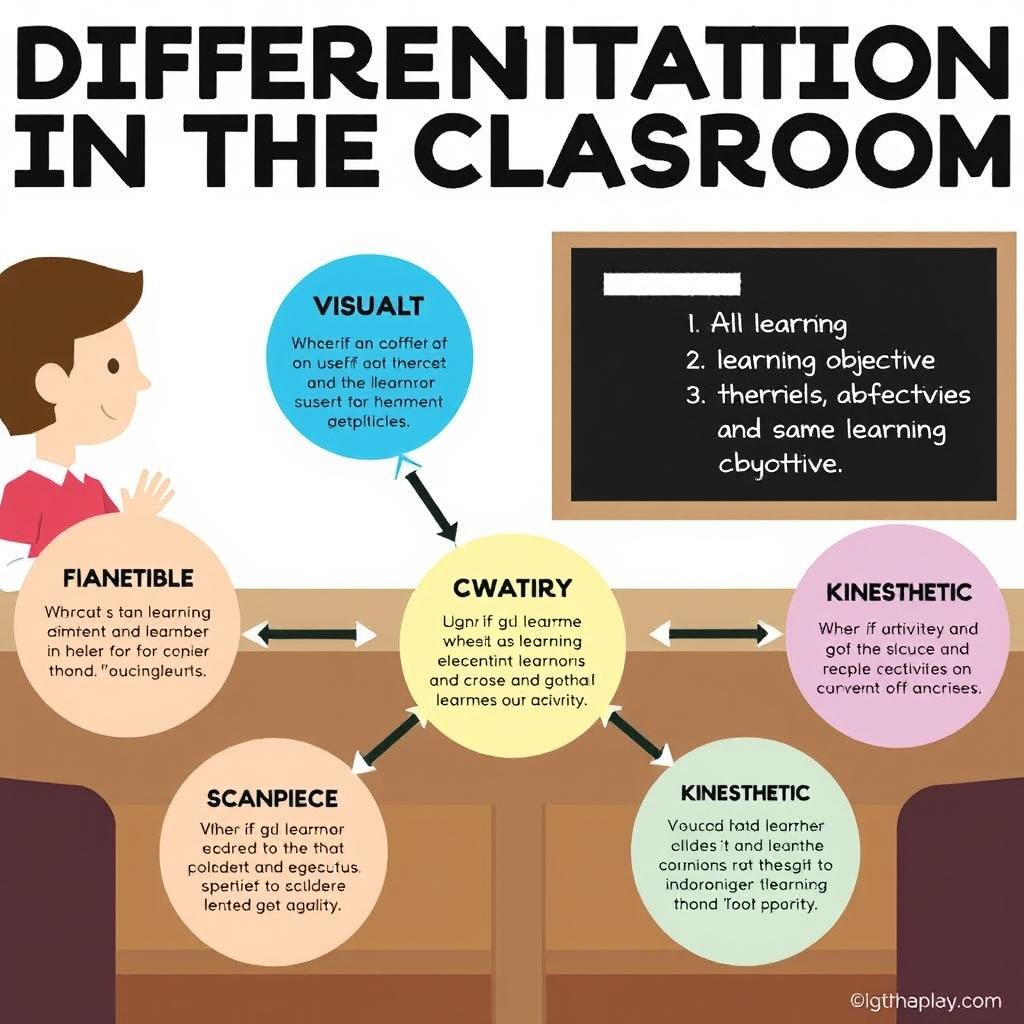
- Ongoing adjustments to instruction
- May have varied goals for different students
- Focuses on meeting individual needs
- Addresses learning preferences and styles
- Parallel and simultaneous approaches
While scaffolding provides a temporary framework that’s gradually removed as students master new concepts, differentiation involves ongoing modifications to help students based on their individual needs, interests, and learning profiles. Effective differentiation techniques often incorporate scaffolding, creating a comprehensive approach to supporting diverse learners.
Enhance Your Teaching Toolkit
Looking to deepen your understanding of differentiation? Explore our comprehensive resources designed specifically for K12 educators.
This video demonstrates practical scaffolding strategies that you can implement in your classroom. Notice how the teacher provides structured support while gradually releasing responsibility to students as they gain confidence with the material.
5 Effective Scaffolding Strategies for K12 Classrooms
Implementing effective scaffolding strategies requires thoughtful planning and execution. Here are five proven approaches that can transform learning in your classroom:
1. Modeling and Think-Alouds
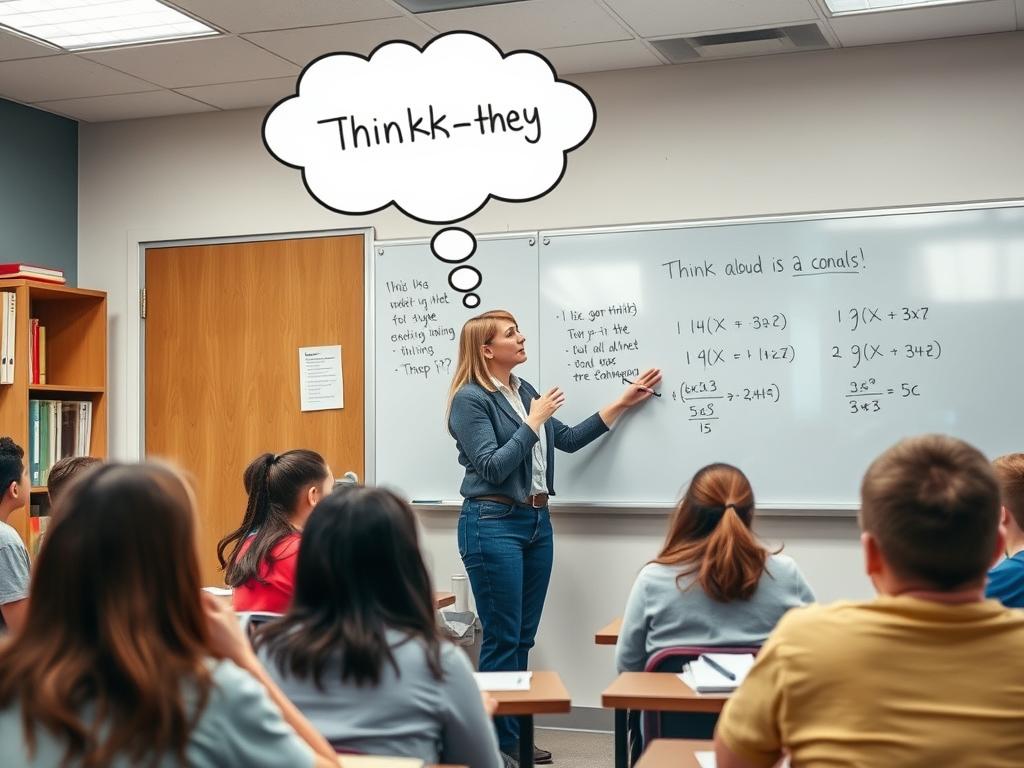
Modeling is one of the most powerful scaffolding strategies available to teachers. When you demonstrate your thinking process out loud, students gain insight into how experts approach problems.
Implementation Tips:
- Verbalize your thought process as you solve problems
- Show students both successful approaches and how to recover from mistakes
- Use questions like “What do I know?” and “What strategy might work here?”
- Gradually invite students to contribute to the thinking process
After modeling, ask students to practice the same think-aloud process with a partner before attempting independent work. This gradual release helps build confidence and reinforces the thinking strategies you’ve demonstrated.
2. Visual Aids and Graphic Organizers
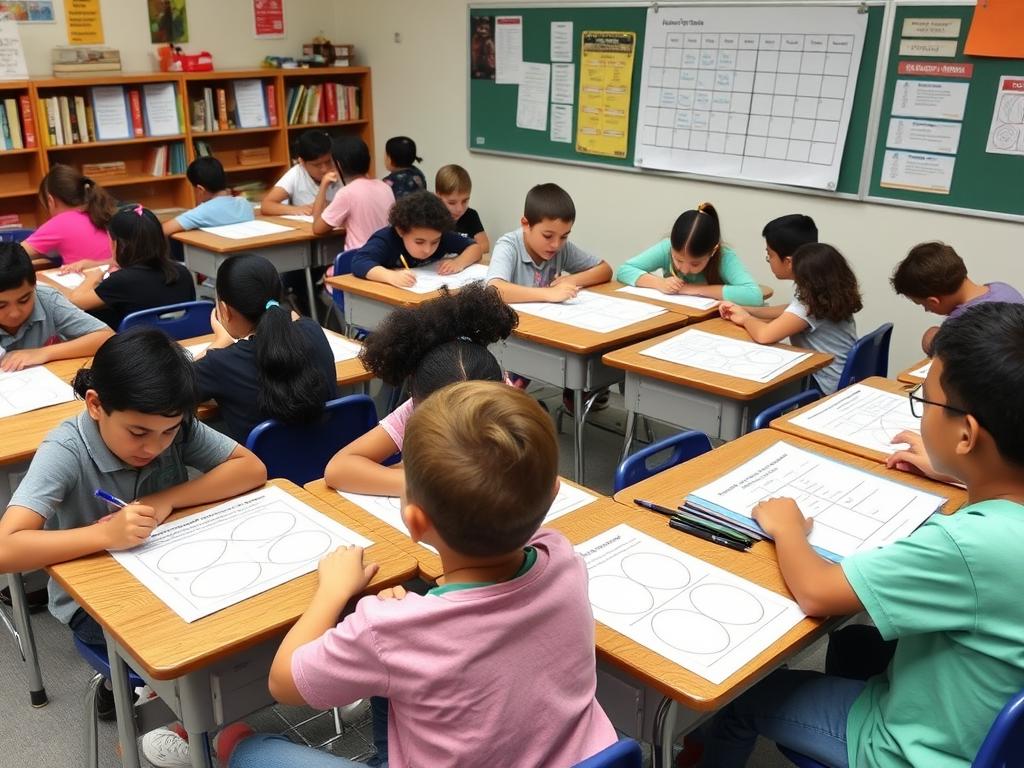
Visual aids provide crucial support for processing new information. Graphic organizers help students organize their thinking and see relationships between concepts that might otherwise remain abstract.
- Concept Maps: Help students connect related ideas and see the big picture
- Venn Diagrams: Support compare and contrast thinking
- KWL Charts: Activate prior knowledge and track learning progress
- Sequence Charts: Assist with understanding processes and timelines
- T-Charts: Organize information into two categories
When introducing new concepts, provide partially completed graphic organizers that students may fill in during the lesson. As they gain proficiency, they can create their own organizers from scratch.
3. Vocabulary Pre-Teaching and Word Banks
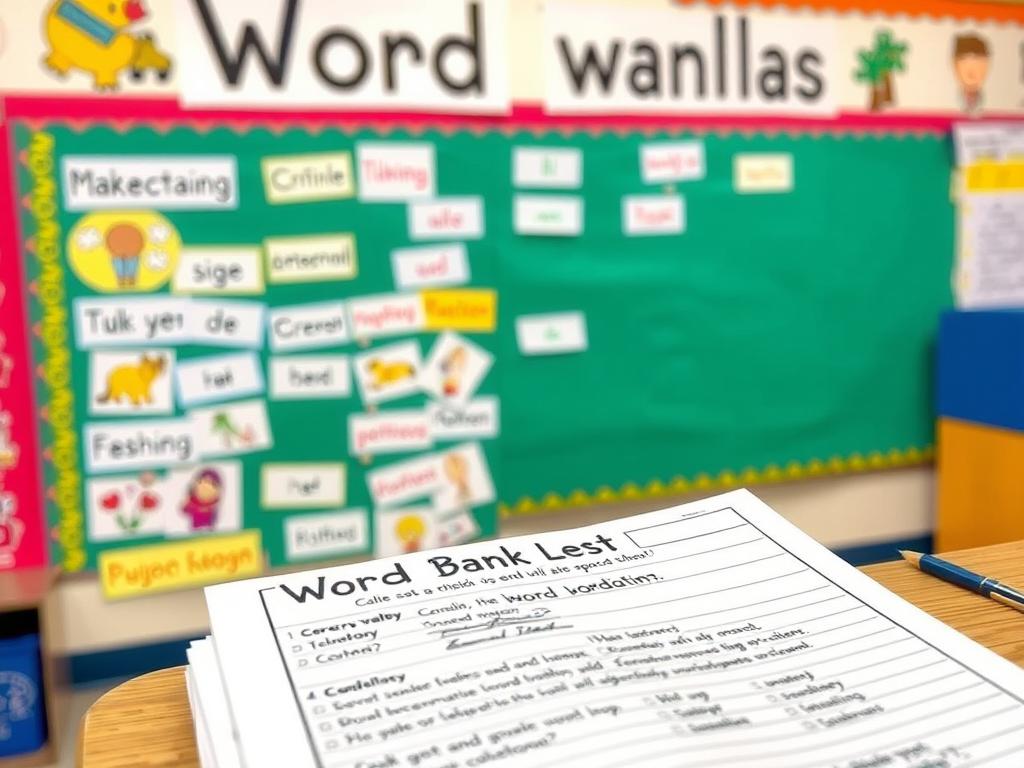
Unfamiliar vocabulary can be a significant barrier to understanding new concepts. Pre-teaching essential terms before diving into content gives students the tools they need to engage with the material.
“When students understand the vocabulary, they can focus on the concepts rather than struggling to decipher the language.”
Effective vocabulary scaffolding strategies include:
- Creating illustrated word walls that remain visible throughout the unit
- Providing word banks for writing and discussion activities
- Using visual representations alongside new terms
- Connecting new vocabulary to familiar concepts
- Encouraging students to create personal dictionaries
Remember to revisit key vocabulary throughout your lessons to reinforce understanding and usage.
4. Chunking Complex Tasks

Breaking complex tasks into smaller, manageable parts is a cornerstone of effective scaffolding strategies. This approach prevents cognitive overload and allows students to experience success at each step.
Chunking Process:
- Analyze the task to identify component skills
- Sequence the chunks from simple to complex
- Provide clear instructions for each chunk
- Build in checkpoints to assess understanding
- Gradually connect the chunks to reveal the whole
For example, instead of assigning a complete essay, break it down into brainstorming, outlining, drafting individual paragraphs, revising, and editing. Provide specific scaffolding strategies for each phase of the process.
5. Collaborative Learning Structures
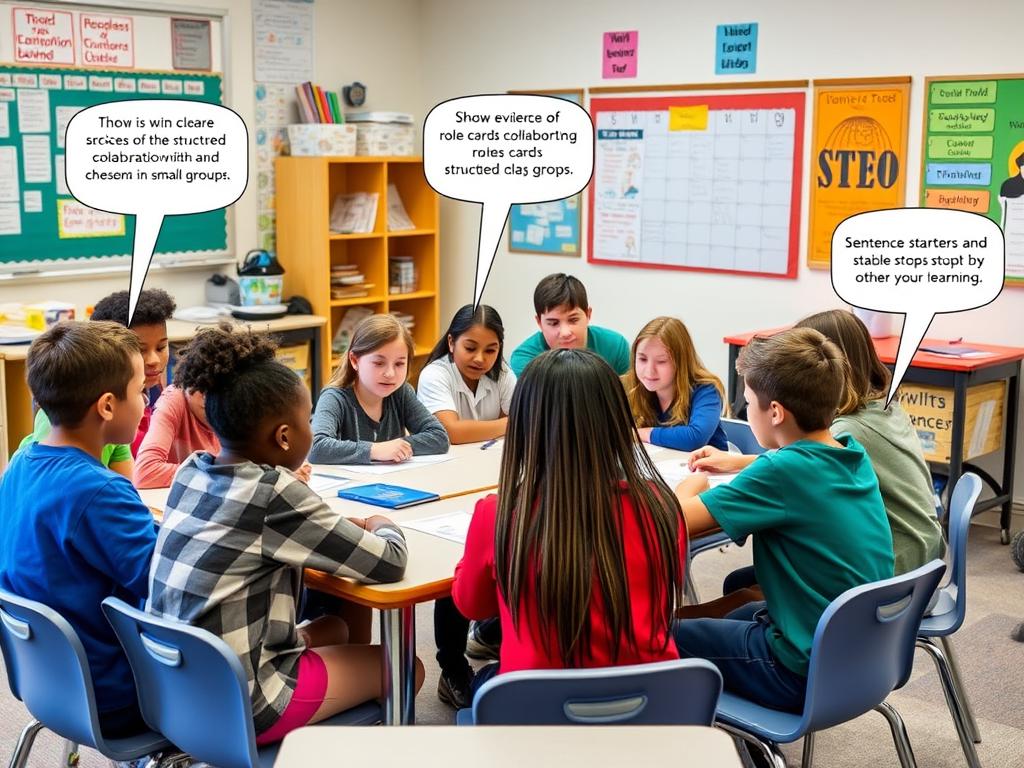
Peer collaboration provides natural scaffolding as students support each other’s learning. Structured collaborative activities create opportunities for students to articulate their thinking and learn from peers.
Effective collaborative scaffolding strategies include:
- Think-Pair-Share: Gives students time to process before discussing
- Jigsaw: Makes each student responsible for teaching part of the material
- Reciprocal Teaching: Students take turns leading discussion using four strategies
- Structured Academic Controversy: Supports evidence-based discussion
- Gallery Walks: Encourages peer feedback and multiple perspectives
To maximize the effectiveness of collaborative learning, provide clear structures, roles, and expectations. Sentence starters, discussion guides, and role cards can help students engage productively with the content and each other.
Ready to Transform Your Teaching?
Discover more research-based strategies and professional development opportunities at Credits for Teachers.
Implementing Scaffolding Strategies Successfully
Effective implementation of scaffolding strategies requires thoughtful planning and a responsive approach. Consider these key principles as you incorporate scaffolding into your teaching practice:

Know Your Students’ Starting Points
Effective scaffolding begins with understanding what students already know and can do. Use pre-assessments, observations, and conversations to identify each student’s zone of proximal development. This information helps you target your scaffolding strategies appropriately.
Plan for Gradual Release
The ultimate goal of scaffolding is independence. Plan how you’ll gradually remove supports as students demonstrate mastery. This might involve:
- Moving from fully completed models to partial examples
- Reducing the detail level in graphic organizers
- Transitioning from specific to more general prompts
- Shifting from frequent check-ins to student-initiated help
Balance Challenge and Support
Effective scaffolding maintains the right balance between challenge and support. Tasks should be challenging enough to promote growth but supported enough to prevent frustration. Regularly ask students about their confidence levels and adjust your scaffolding accordingly.
Use Formative Assessment
Ongoing assessment helps you determine when to maintain, adjust, or remove scaffolds. Look for evidence that students are internalizing strategies and applying them independently before reducing support.
How do I know when to remove scaffolding?
Look for signs that students can apply strategies independently, demonstrate conceptual understanding, and self-correct errors. Gradually reduce support and observe how students respond. If they maintain performance, they’re ready for independence. If they struggle, reintroduce targeted scaffolds.
Can scaffolding work in mixed-ability classrooms?
Absolutely! In fact, scaffolding is particularly valuable in diverse classrooms. By providing different levels of support based on individual needs, you can help all students access the same curriculum. This approach works well alongside differentiation strategies to create an inclusive learning environment.
Bringing Scaffolding Strategies into Your Classroom
Implementing effective scaffolding strategies is a journey that evolves with your teaching practice and your students’ needs. Start by incorporating one or two strategies into your existing lessons, then expand your repertoire as you and your students become more comfortable with the approach.
Remember that the ultimate goal of scaffolding is to build independent, confident learners who can tackle challenging material with appropriate strategies. By providing temporary supports that gradually fade, you empower students to take ownership of their learning.
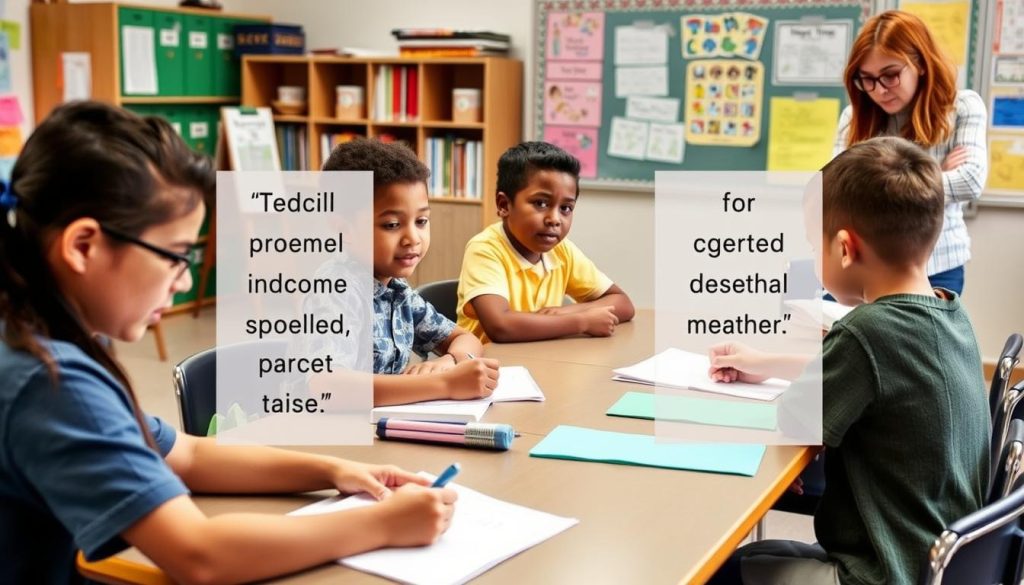
As you implement these scaffolding strategies in your classroom, you’ll likely notice increased engagement, deeper understanding, and greater student confidence. The temporary supports you provide today build the foundation for the independent thinkers of tomorrow.
Continue Your Professional Growth
Ready to explore more teaching strategies and earn professional development credit? Visit Credits for Teachers for resources designed by educators, for educators.




